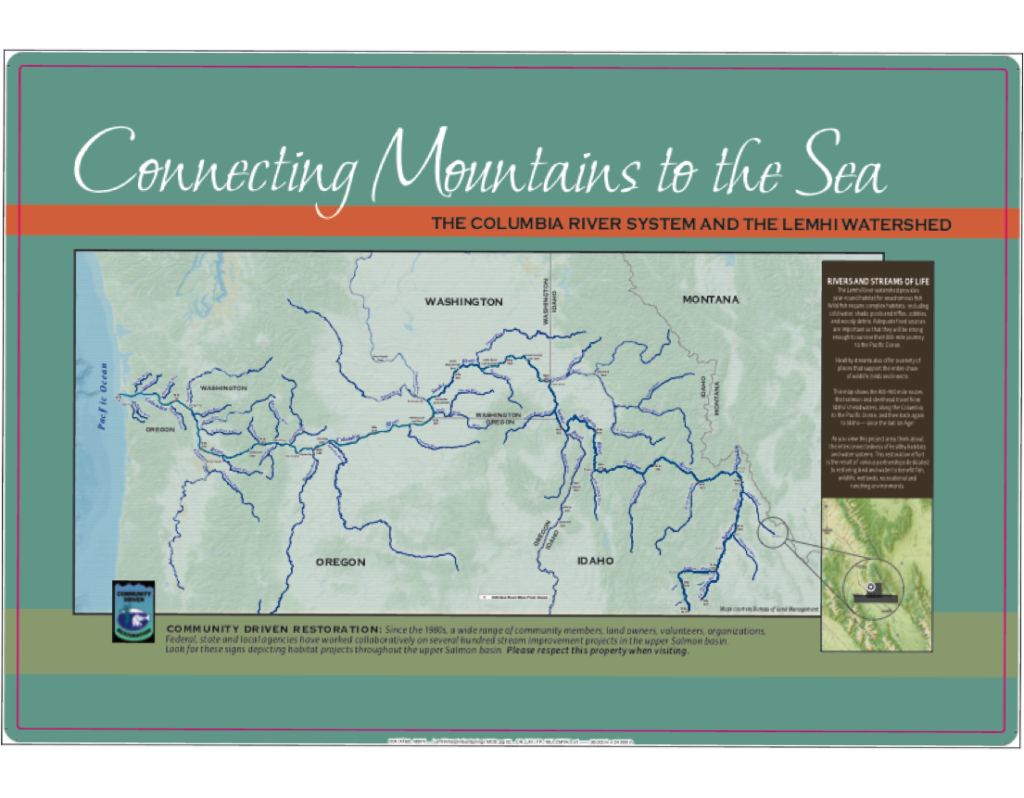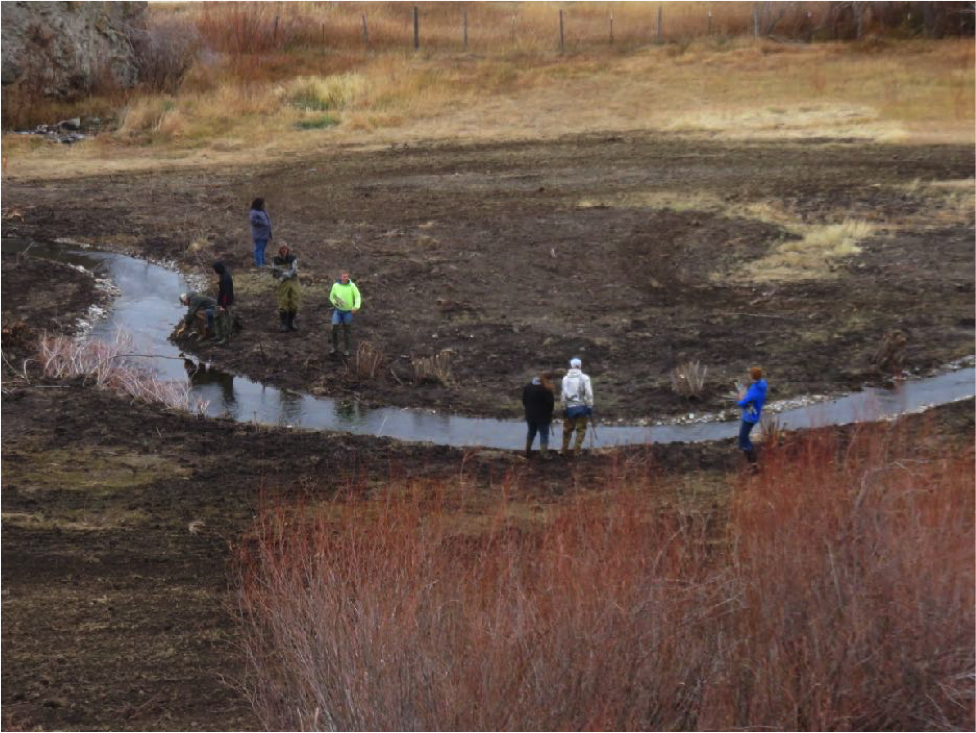Idaho’s Trout Unlimited River Of No Return Chapter (RNRTU) recently completed its collaborative, Embrace A Stream (EAS) funded Indian Springs Stream Enhancement and Interpretive Site project.
In addition to a myriad of partners, nearby Leadore High School students participated in service learning, seeding restoration areas and harvesting willow before planting the cuttings along Indian Springs Creek.

RNRTU’s EAS project objectives:
Increase public awareness on the effects of healthy habitat in the upper Salmon and Lemhi basins to benefit Idaho’s salmon and steelhead recovery.
Educate visitors to the area, as well as many local residents, about the incredible 850 mile journey that Idaho’s anadromous fish make to the ocean and then back to Idaho to spawn in these small tributaries.
Emphasize the importance that healthy, unimpeded rivers are for the successful migration and return of Idaho’s anadromous fish.
Publicize Trout Unlimited’s ongoing commitment to improving habitat in the Upper Salmon Basin.
Involve community youth in a habitat restoration project.
Expand TU’s commitment to the Salmon community as a conservation partner and as a supporter of outdoor educational efforts for kids and young adults.
Outcomes and Evaluation:
RNRTU successfully collaborated with other groups including Lemhi Regional Land Trust, Upper Salmon Basin Watershed Project and the Bureau of Land Management. Together we created a series of 3 kiosk sites with educational themes throughout the Lemhi Valley. RNRTU’s project site for the interpretive/educational kiosk was adjacent to a riparian enhancement project that was completed by local TU staff during the same time frame. The site for this project is adjacent to a major public thoroughfare – Highway 28, in south/central Idaho. We are unable to monitor the number of visitors at this time but plan to build a sign-in or comment station on site to get feedback and visitor count. Currently, visitor numbers and feedback are word of mouth.
As a result of the stream restoration project, a small spring fed stream, Indian Springs, and an adjacent stream, Sawmill Creek, will now flow year round and will be permanently re-connected to the mainstream, Lemhi River. Adding flow to these small streams as well as to the mainstream, Lemhi River, will improve summer and winter temperatures and conditions for anadromous and resident fish. The restoration of these smaller stream improvements will provide important niche habitat for juvenile salmon and steelhead survival. This habitat enhancement is visible from the kiosk site and incorporated into the theme of the educational information on the panels.

The kiosks will increase awareness and provide educational information on the value of healthy riparian areas and their relationship to salmon and steelhead life cycles. They explain the life cycles of salmon and steelhead and their cultural significance to Native Americans. The kiosks also publicize the decades long work that Trout Unlimited and it’s partners have accomplished and their commitment toward improving habitat in the Upper Salmon Basin. The relatively remote settings of these sites make monitoring the number of visitors, length of stay, and overall impression, difficult.
Cattle were excluded from sensitive riparian areas as part of the restoration project. The 4 acre area was then seeded with native vegetation. In one year a ground cover of grasses and forbs has been well established. This native vegetation will provide habitat for multiple species of fish and wildlife. Weeds will continue to be controlled by TU staff and volunteers. Willows were planted throughout the project area. They have shown substantial growth in the first year and should continue to do so without the grazing pressure. TU staff will monitor the riparian improvement outcomes with yearly photo points. The Idaho Fish and Game department will do electroshocking to get yearly fish counts and fish species composition counts. Folks driving along the highway now observe native grasses, willows and a natural stream running through an area that was once a weedy, stomped out cattle feed lot.

RNRTU was able to engage students from the the nearby Leadore High School for participation in willow cutting and harvesting and then in the planting of those willows alone 500 feet of Indian Springs creek. They also helped with seeding the area. The assisting teachers and TU staff incorporated a biology lesson and interpretive on-site talk on salmon and steelhead habitat and life cycles. One student used the riparian enhancement project for the theme of his senior thesis, which he presented to the TU Board of Directors. Feedback from high-school staff was very positive. Feedback from the RNRTU BOD on the high school presentation was less than positive but honest.

With the help of Matt Green, (TU’s Idaho Water and Habitat Program-Upper Salmon Project Manager) and Breann Westfall Green, (Restoration and Stewardship Co-ordinator, Lemhi Regional Land Trust) and the private and Federal landowners at each of the three kiosk sites, RNRTU was able to accomplish the objectives set out. With the involvement of the 3 other partners we created a unified approach to educating the public on four main fronts: 1) the decades long work by TU and partners that has gone in to habitat improvement, 2) the importance of the upper reaches of the Salmon River, including the Lemhi River and it’s tributaries, to the survival and health of salmon and steelhead and other native fish and wildlife species, 3) explain the steps involved in habitat restoration evidenced by the on-site project, 4) educate the public on the connectivity of Idaho’s salmon and steelhead to the ocean and therefore the importance of a healthy migratory system (Snake and Columbia Rivers). The RNRTU board feels public communication, awareness and education is essential in helping to recovery of Idaho’s salmon and steelhead.

